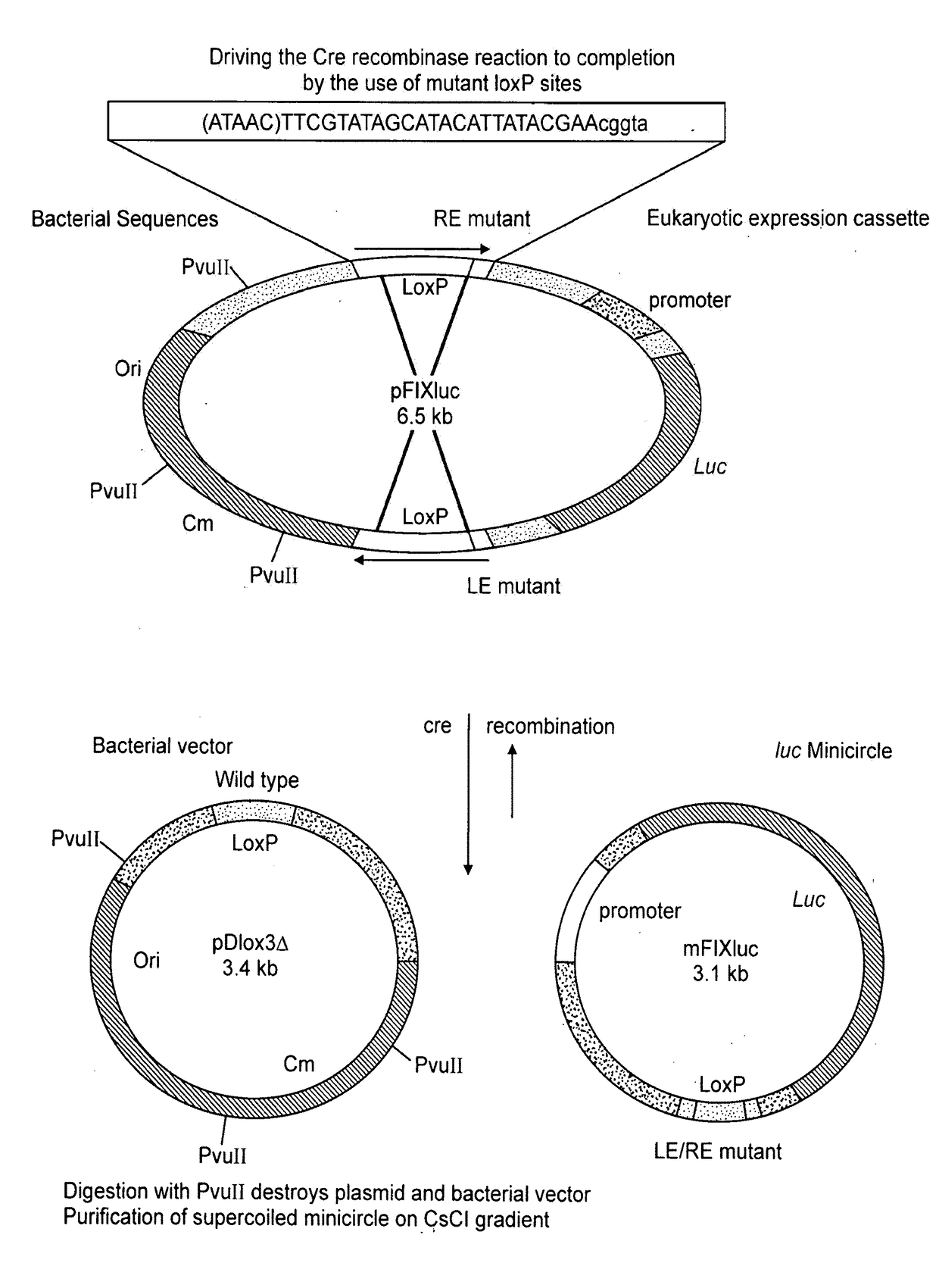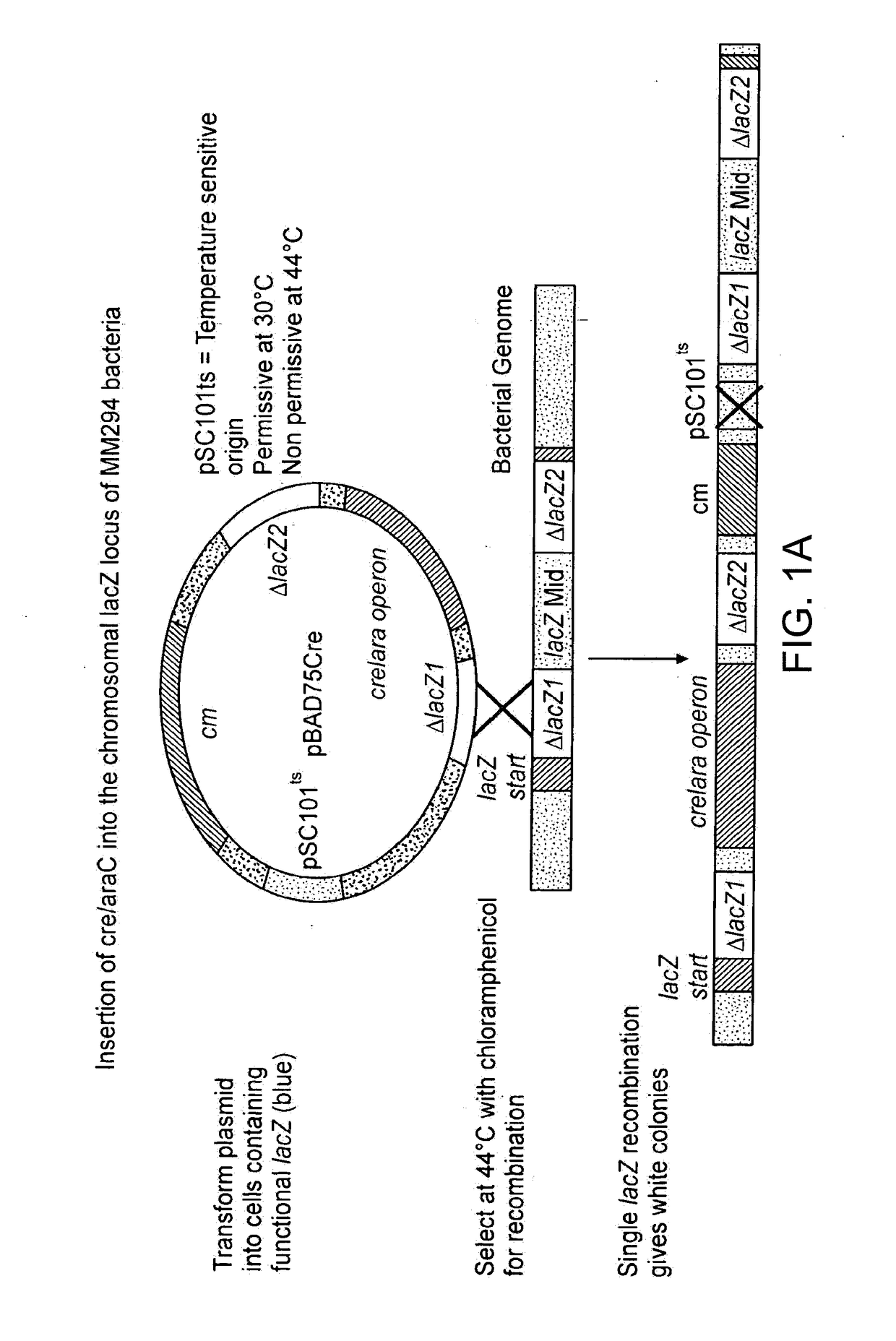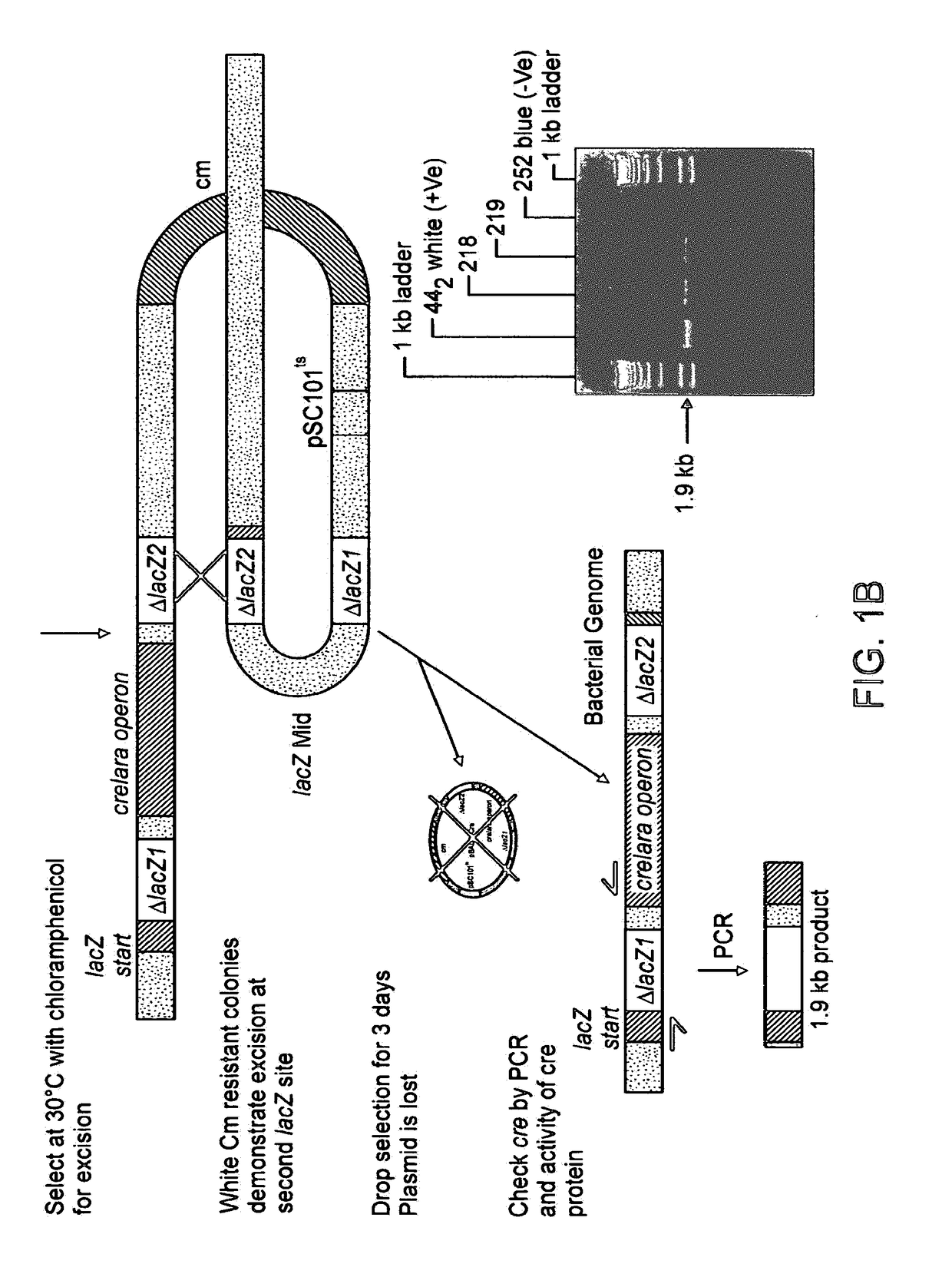Methods of producing recombinant minicircle constructs
a technology of constructs and minicircles, which is applied in the field of recombinant minicircle constructs, can solve the problems of reducing the ability of recombined loxp sites in the generated miniplasmid to be fully normal, and achieves the effects of reducing affinity, reducing the formation of minicircle concatamers, and reducing the affinity
- Summary
- Abstract
- Description
- Claims
- Application Information
AI Technical Summary
Benefits of technology
Problems solved by technology
Method used
Image
Examples
example 1
[0071]Experimental Procedures
[0072]Plasmids, Strains and Oligonucleotides
[0073]Plasmid pBC SK(+) was purchased from Stratagene, Plasmid pDSRed1-N1 was purchased from Clontech. Plasmids p705Cre, pBAD33Cre and pSVpAX1, as well as bacterial strain MM294, were kind gifts from Dr. F. Buchholz and Dr. A. F. Stewart EMBL). Plasmid pCIKluc was a gift from Dr. D. Gill and Dr. S. Hyde (Oxford University). Mitochondrial plasmids pRSmtOTCAPr, and pRSmtJMC, were made as previously described (Bigger et al, (2000) Anal Biochem 277(2), 236-242. Oligonucleotides (Genosys) DLOX 5′-GGAATTCATA ACTTCGTATA ATGTATGCTA TACGAAGTA TTAATCTCGA GTAATAACTT CGTATAATGT ATGCTATACG AAGTATGGT ACCGCGCCCG-3′ and REVDL 5′-CGGGCGCGGT ACCATAACT-3′ were used to synthesise a DNA fragment with two loxP sites to ultimately create plasmid pDlox3, as well as to reconstruct the ND5 / ND6 junction to create pDlox1. Oligonucleotides LINK1 5′-TCGAGTCGAC TCTAGAGGAT CCGAGCTCCC CGGGAAGCTT CTGCAGT-3′ and LINK2 5′-TCGAACTGCA GAAGCTTCCC GG...
example 2
[0153]The aim of this example is to create a bacterial strain where both Cre-recombinase and PvuII-endonuclease (PvuII) are inducibly expressed, allowing generation of minicircle DNA with concomitant complete or partial elimination of the unwanted recombination products in vivo.
[0154]Construction and Selection of pPvuII-6 Plasmid
[0155]The chromosomal DNA of Proteus vulgais ATCC13315 was used as the source of a gene encoding the restriction endonuclease PvuII (Athanasiadis et al., (1990) Nucleic Acids Res., 18: 6434; Gingeras et al., (1981) Nucleic Acids Res. 9:4525-4536). High-fidelity Pfx-polymerase (Invitrogen) and primers PvuF 5′-AGCGATGGTA CCATGAGTCA CCCAGATCTA AATAA-3′ and PvuR 5′-TAGGTTGGTA CCTTAGTAAA TCTTTGTCCC ATGTT-3′ were used to obtain the PCR-product containing PvuII gene flanked by KpnI sites (FIG. 6A and FIG. 6B). The PCR-product was digested with KpnI and ligated to the KpnI-digested plasmid pBAD75Cre described in Example 1. A unique KpnI site in pBAD75Cre is located ...
example 3
[0167]Construction of Minicircle Producing Plasmids with attP and attB Sites for Bacteriophage ΦC31 Integrase
[0168]Integrase of bacteriophage ΦC31 is known to catalyse recombination between specific sequences called attP (39 bp) and attB (34 bp) (Thorpe & Smith, Proc Natl Acad Sci USA. 1998. 95(10): 5505-10; Groth et al, Proc Natl Acad Sci USA. 2000. 97(11): 5995-6000). The recombination sites attP and attB were introduced into plasmid pBC-SK(+) by annealing of oligonucleotides OLIGO-F 5′-CTCGAATTCA TAACTTCGTA TAGCATACAT TATACGAACG GTACTCGAGT ACCGTTCGTA TAGCATACAT TATACGAAGT TATGGTACCA AAAA-3′ and OLIGO-R 5′-TGATGAATTC CGCGCCCG-3′, filling in with Pfx-polymerase at 68° C., digesting further with EcoRI and KpnI, and ligating to create pDATT1. The unwanted polylinker was removed from pDATT1 by PstI and BamHI digestion, treatment with the Klenow fragment of the E. coli DNA polymerase I and ligation to produce pDATT2. The luciferase expression cassette was excised by XhoI from pFIXluc a...
PUM
| Property | Measurement | Unit |
|---|---|---|
| temperatures | aaaaa | aaaaa |
| temperature | aaaaa | aaaaa |
| volume | aaaaa | aaaaa |
Abstract
Description
Claims
Application Information
 Login to View More
Login to View More - R&D
- Intellectual Property
- Life Sciences
- Materials
- Tech Scout
- Unparalleled Data Quality
- Higher Quality Content
- 60% Fewer Hallucinations
Browse by: Latest US Patents, China's latest patents, Technical Efficacy Thesaurus, Application Domain, Technology Topic, Popular Technical Reports.
© 2025 PatSnap. All rights reserved.Legal|Privacy policy|Modern Slavery Act Transparency Statement|Sitemap|About US| Contact US: help@patsnap.com



